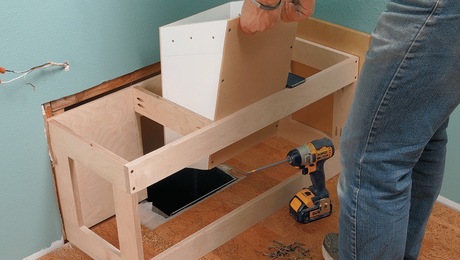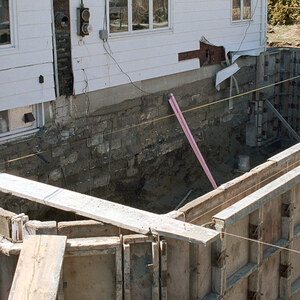I went with a friend to a rent house he owns to help him determine what repairs and improvements might be needed. The tenant is moving after 15 years occupancy. Along with upgrades, the interior needs a good deal of repair, cosmetic and major.
The house was built in the late 60’s and has a slab foundation with sleepers. The living room ceiling is sheetrock, probably 1/2″, and has numerous cracks along the butt joints. He recalled that during his ownership the ceiling has been retaped and mudded several times, but that the cracks have kept reappearing over the years. At this point, the ceiling needs replacement.
I am wondering if a solution might be in glueing and screwing plywood to the ceiling joists and installing new sheetrock over the “sub ceiling”, staggered and butted off the plywood joints.
If that sounds like a plausible solution, would it be better to run the sheetrock perpendicular to the plywood? And, would separation cracks be likely to appear where the ceiling and walls join? If that is likely, would crown moulding help disguise that movement?
Any thoughts about that solution, or any other, are appreciated.
.


















Replies
Put up a new ceiling under the old one. Make sure to offset the joints on the new from the old. Use 1/2 inch ceiling drywall, or 5/8 standard. I don't think any more cracks will occur.
Thanks MarkH.
Would be somewhat helpful to know what the ceiling structure is -- trusses or common joists -- and whether there's any moisture problems in the attic (or elsewhere). (I assume there's attic above the living room.) Insulation in the attic? Is the rock running parallel to the joists or cross-ways? It's only the butt joints that crack? Cracks in any other rooms? (If not, why not?)
Thanks DanH.
Common joists; no moisture problems observable; crawl space (shallow attic) above ceiling; uncertain about insulation above, probably little if any; uncertain how the sheetrock runs; only butt joints that are cracked; could be cracks in other rooms that I didn't notice. Does any of that suggest that sheetrock over plywood would solve the problem - or is there another, better solution that you know?
It's unusual for the butt joints to separate on a ceiling like you seem to describe. Maybe you'll have a crack here or there, but not multiple joints. I suspect that the drywall was applied parallel to the joists (rather than at right angles) and the butt joints are "hanging" rather than ending on a joist.
In theory you could have someone crawl up and hold pieces of plywood over each joint while you drive DW screws from below, but that's difficult in a normal attic and likely impossible in a tight crawl. So probably going over with another layer of DW at right angles to the first (and the butts planned to end on the joists) is the way to go.